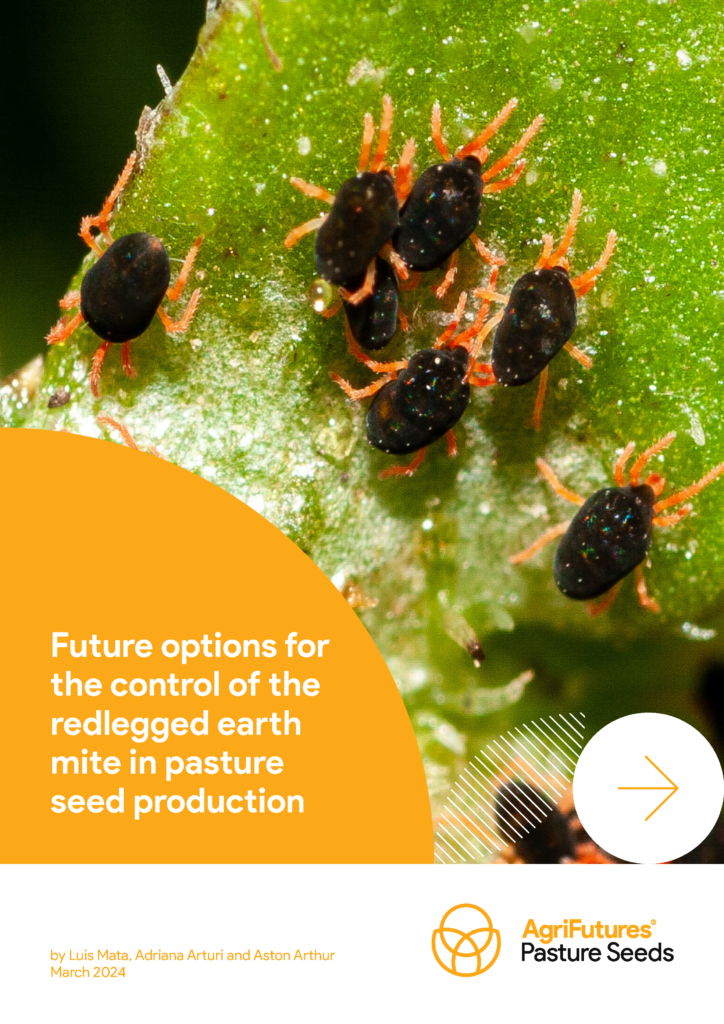Redlegged earth mite (RLEM; Halotydeus destructor) has been a significant pest to broadleaf plants and legumes across southern Australia since it was accidentally introduced in the 1900s. Where it isn’t managed, resulting losses can be up to 80% of yield, especially if RLEM establishes during earlier growth stages.
Insecticide resistance was first discovered in 2006 and represents a risk to the traditional management of pests and, in turn, the productivity and viability of the Australian pasture seeds industry. Effective control options are imperative as resistance can develop faster than active chemicals can be discovered, tested and commercially released.
With a limited range of chemicals available to use in rotation, it is important that growers understand what their options are so they can maintain productivity and long-term viability. AgriFutures Australia is committed to the long-term productivity and viability of the industry, and investment in strategies to manage the risk of RLEM is one way we can help achieve this.
This project built on previous investments made by the Grains Research and Development Corporation, Meat & Livestock Australia and agrochemical companies in the project Future options for the control of the redlegged earth mite in Australian crops by focusing on sampling at pasture seed production sites and exploring options for pasture seed growers.
The findings confirm that surveillance to monitor both the spread of resistant populations and whether populations previously susceptible to particular mode of action (MOA) groups are becoming resistant is essential. Surveillance should be coupled with activities to increase grower awareness and adoption of the RLEM resistance management strategy (RMS), so they understand the range of alternative controls (cultural and chemical) to reduce selection pressure for resistance.
Key recommendations of the RLEM RMS are to avoid unnecessary spraying and rotate between insecticide MOA groups. As the pasture seeds industry is a component of the supply chain for many agricultural industries, focus should also be on cross-collaboration between industries to increase investment in managing a pest significant to many industries.





